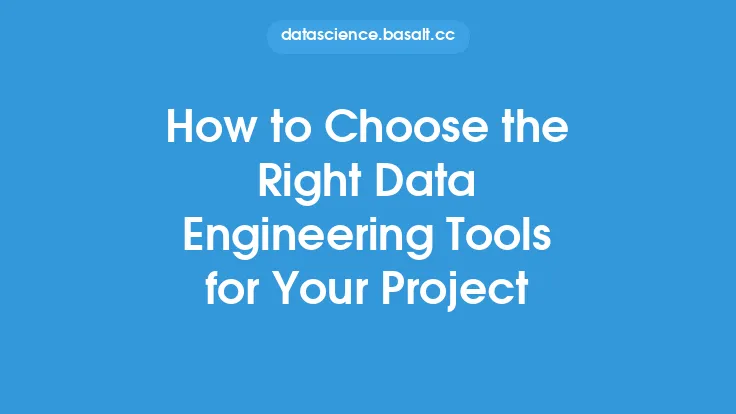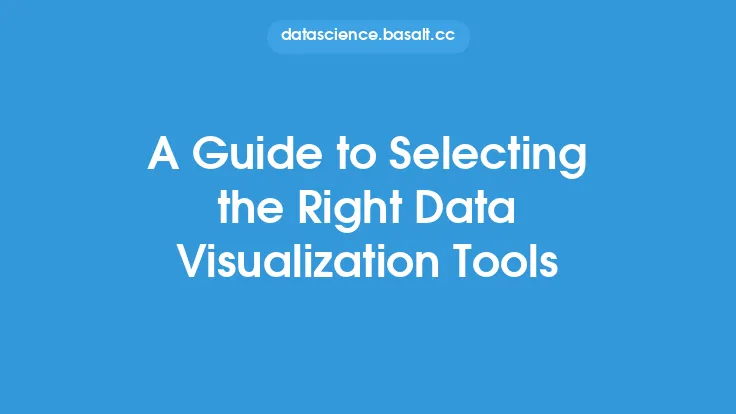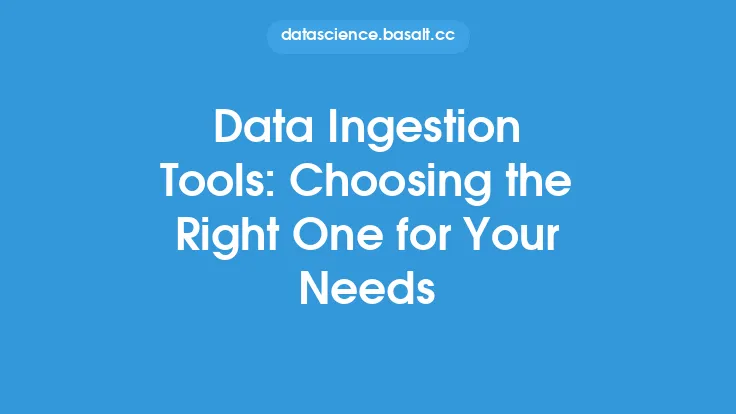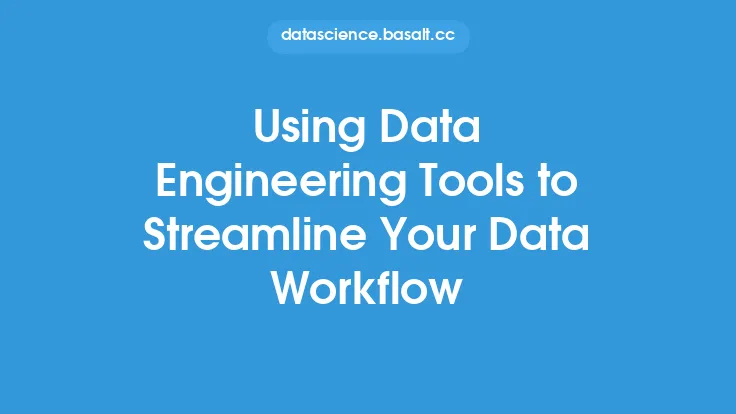When it comes to selecting data engineering tools for your team, there are several key considerations that must be taken into account. The right tools can make all the difference in the efficiency, productivity, and overall success of your data engineering projects. In this article, we will delve into the essential factors to consider when choosing data engineering tools, providing you with a comprehensive understanding of what to look for and how to make informed decisions.
Understanding Your Team's Needs
Before selecting data engineering tools, it's crucial to understand your team's specific needs and requirements. This involves assessing the types of projects you will be working on, the size and complexity of your datasets, and the skills and expertise of your team members. Consider the following factors:
- The types of data you will be working with, such as structured, unstructured, or semi-structured data
- The data processing and analysis requirements, including data ingestion, transformation, and visualization
- The scalability and performance needs of your projects, including the ability to handle large volumes of data and high-traffic applications
- The level of collaboration and communication required among team members, including version control and project management
Evaluating Tool Options
Once you have a clear understanding of your team's needs, you can begin evaluating data engineering tool options. This involves researching and comparing different tools, considering factors such as:
- Functionality and features, including data processing, storage, and analysis capabilities
- Scalability and performance, including the ability to handle large datasets and high-traffic applications
- Integration and compatibility, including support for various data formats, programming languages, and operating systems
- Security and reliability, including data encryption, access controls, and backup and recovery options
- Cost and licensing, including subscription models, pricing tiers, and support for open-source and proprietary options
Assessing Tool Complexity and Learning Curve
Another critical consideration when selecting data engineering tools is the level of complexity and the learning curve associated with each tool. This involves evaluating the ease of use, documentation, and support resources available for each tool, as well as the level of expertise required to effectively utilize the tool. Consider the following factors:
- The level of technical expertise required to use the tool, including programming languages, data modeling, and system administration
- The availability and quality of documentation, including user manuals, tutorials, and API references
- The level of support and community resources available, including forums, mailing lists, and social media groups
- The ease of integration with existing tools and systems, including compatibility with various data formats and programming languages
Considering Cloud and On-Premises Options
When selecting data engineering tools, you must also consider the deployment options, including cloud and on-premises environments. This involves evaluating the pros and cons of each option, including:
- Scalability and flexibility, including the ability to quickly scale up or down to meet changing demands
- Cost and pricing, including subscription models, pricing tiers, and support for pay-as-you-go options
- Security and compliance, including data encryption, access controls, and support for regulatory requirements
- Integration and compatibility, including support for various data formats, programming languages, and operating systems
Evaluating Open-Source and Proprietary Options
Finally, when selecting data engineering tools, you must consider the trade-offs between open-source and proprietary options. This involves evaluating the pros and cons of each option, including:
- Cost and licensing, including support for free and open-source software, as well as proprietary and commercial options
- Community and support, including the availability and quality of documentation, forums, and social media groups
- Customization and flexibility, including the ability to modify and extend the tool to meet specific needs
- Security and reliability, including data encryption, access controls, and support for regulatory requirements
Conclusion and Recommendations
In conclusion, selecting the right data engineering tools for your team requires careful consideration of several key factors, including your team's needs, tool functionality and features, complexity and learning curve, deployment options, and open-source and proprietary options. By taking the time to evaluate these factors and considering the trade-offs between different options, you can make informed decisions and choose the tools that best meet your team's needs and requirements. Remember to prioritize scalability, performance, security, and reliability, and to consider the level of support and community resources available for each tool. With the right tools in place, your team can efficiently and effectively manage and analyze large datasets, driving business insights and decision-making.





